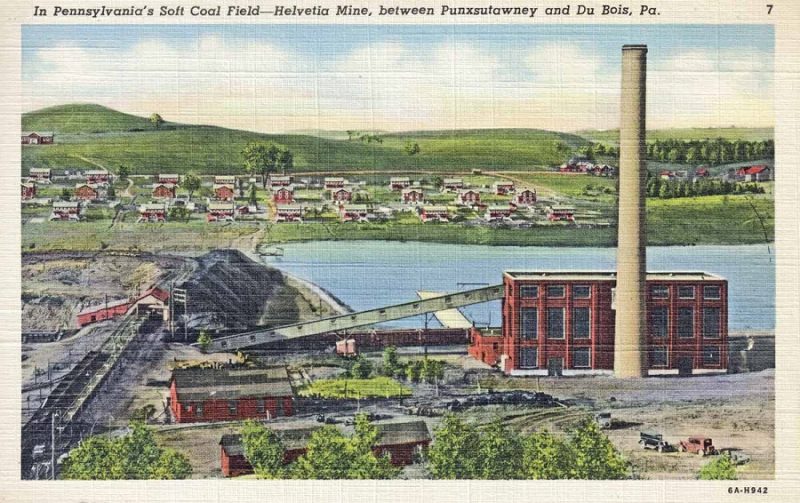Helvetia, in Brady Township, is today a scant few buildings, which include a church.
During the 1890’s and until the immediate aftermath of World War II, it was a powerhouse of the coal mining industry in Clearfield County.
The mining operation, run by the Rochester and Pittsburgh Coal Company, was once one of the world’s largest bituminous coal mines.
This massive enterprise was begun by Adrian Iselin, whose family holdings included the Buffalo, Rochester and Pittsburgh Railroad system.
The Iselin family was part of Pennsylvania’s old coal baron class. They became immensely wealthy, but also had hospitals and towns built.
Miners toiled long and dangerous hours to produce the coal that fueled the industry and infrastructure of the United States.
Contracts with the U.S. and Allied governments, during World War I, bolstered the war effort and helped to bring about victory in 1918. Tragically, 35 miners were killed in the area’s mines between 1892 and 1954.
Uniquely, Helvetia was said to better looking than most mine towns. These communities were typically dreary with coal dust and mud seeming to be everywhere. It even had cement sidewalks to compliment is many houses, businesses and churches.
Helvetia’s demise came fast and hard. When the deep mining industry all but collapsed after World War II, Helvetia followed the pattern of many other mining towns that saw the population move out and move on at a steady pace. Much of the land where the town stood was eventually striped mined.
The color tinted and linen fiber post card, likely from the 1920’s, shows the main processing building with its chute and railroad cars below waiting to be loaded. A well laid out and planned town is shown in the background.
